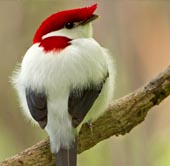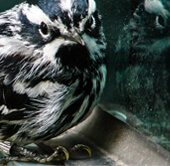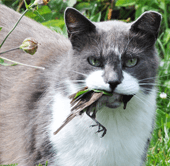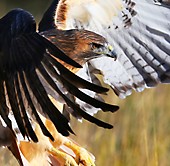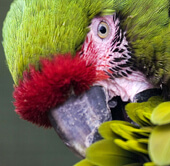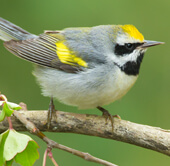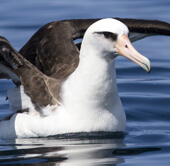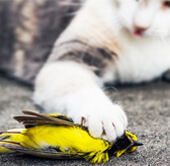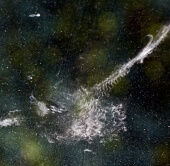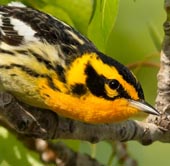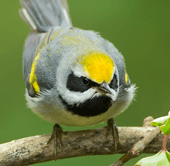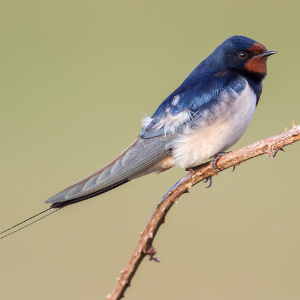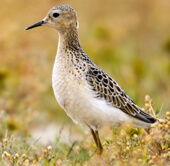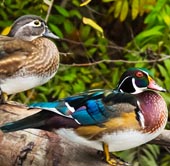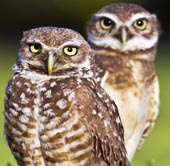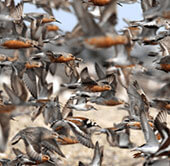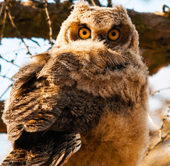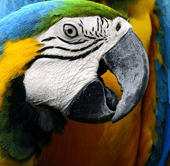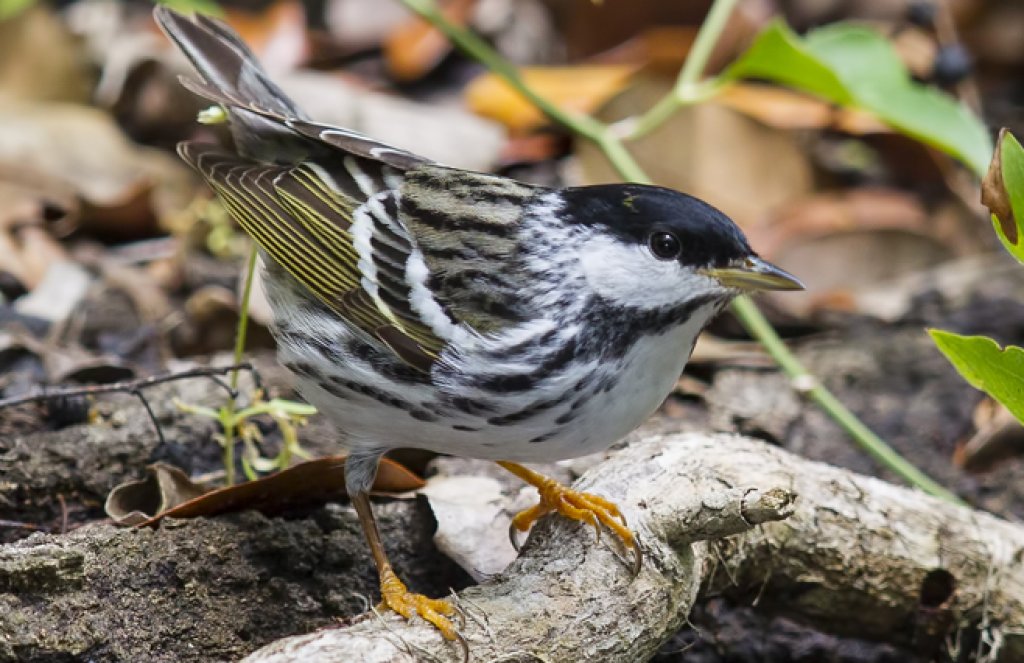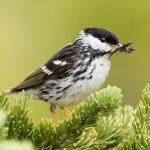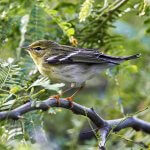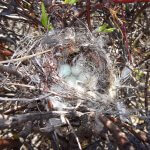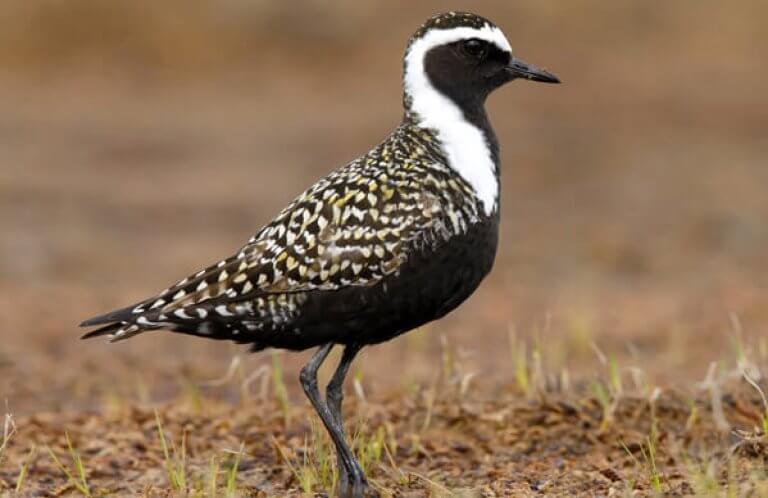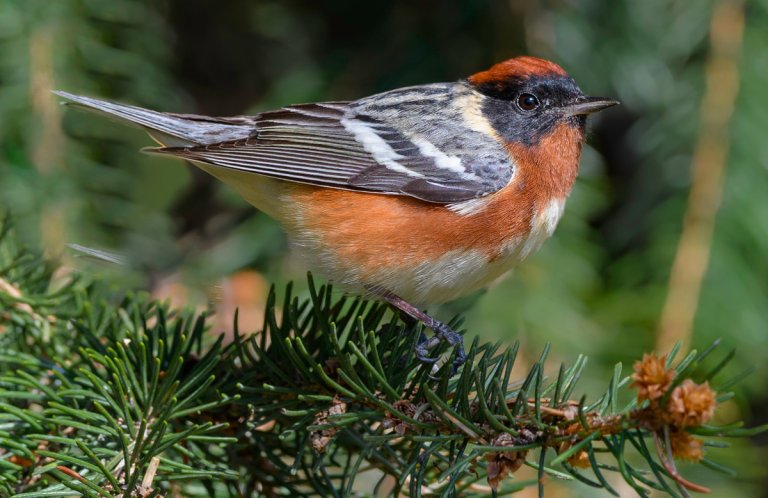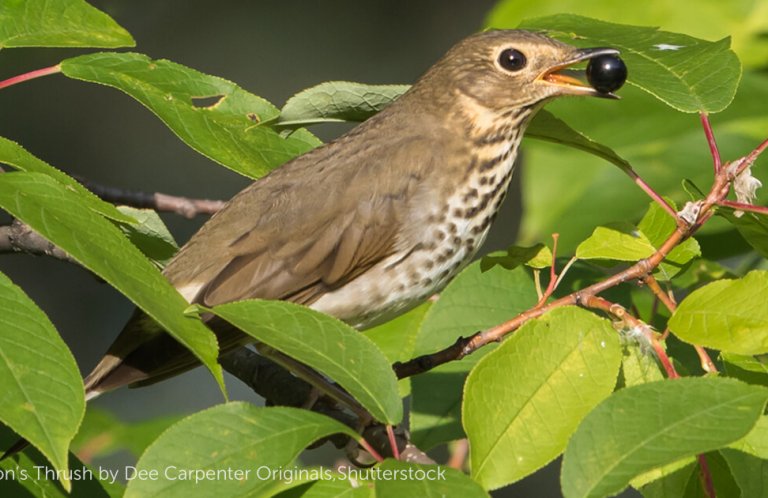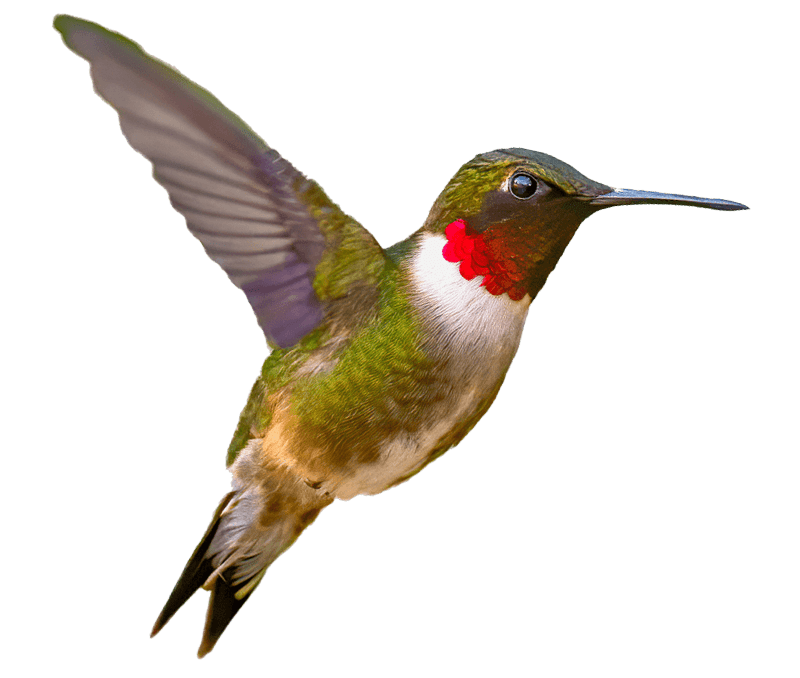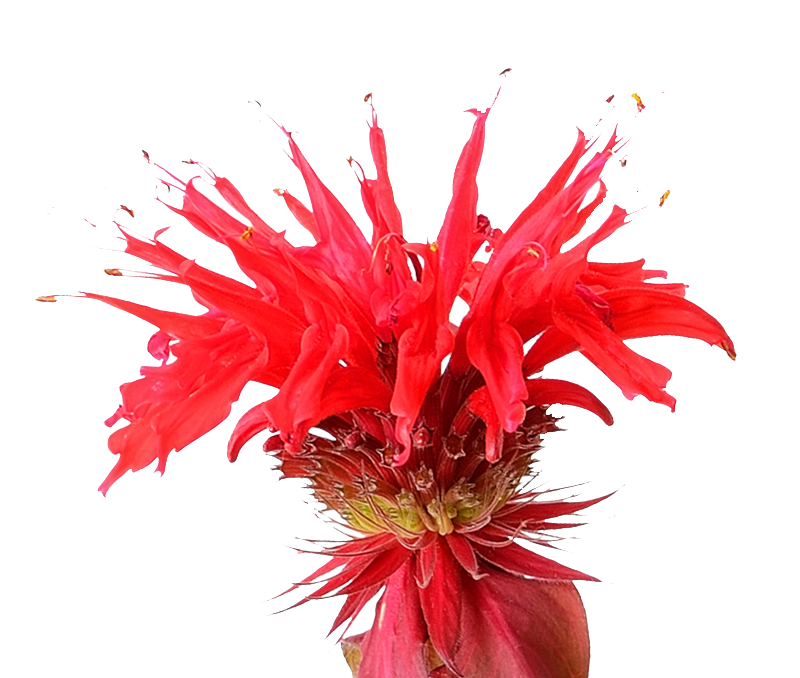About the Blackpoll Warbler
The Blackpoll Warbler, named for the male's black forehead and crown, has the longest migration of any North American warbler. Each fall, most Blackpolls migrate more than 2,000 miles across open water without stopping, sometimes flying for more than 80 hours straight until they reach their Amazon wintering grounds.
Blackpolls have an “elliptical” migration, traveling a different route in the fall and in the spring. Other birds known to have an elliptical migration pattern include the American Golden-Plover and the Connecticut Warbler, which is the only other North American warbler species known to winter in the Amazonian lowlands.
As in many of their tribe, including the Chestnut-sided and Bay-breasted Warblers, male Blackpoll Warblers sport much more subdued coloration as they head south in fall. Gone is the distinctive white cheek and black cap.
Feet First
During fall migration, quiet, mixed warbler flocks can vex the birder. For instance, Blackpoll, Bay-breasted, and Pine Warblers appear very similar this time of year. A combination of field marks helps distinguish "fall" Blackpolls. The first thing to check: Does the bird have yellow feet, or yellow feet and legs? If so, you're likely looking at a Blackpoll. Other clues to watch for: light but crisp breast streaking and white (not light buff) feathering under the tail.
Songs and Sounds
The Blackpoll Warbler has a very high-pitched song – so high that many people have trouble hearing it. For those who can hear it, this song is distinctive, making the birds easy to detect in spring and summer, even if they are not always easy to spot in the foliage.
Listen here:
Breeding and Feeding
Surprisingly Low Nester
Although often sighted in the forest canopy, the Blackpoll Warbler usually nests surprisingly low. Typically, the female chooses a nest site lower than 15 feet up in a young conifer (sometimes just a few feet above the ground). On a horizontal branch, usually close to the trunk, she constructs a hefty cup nest made of twigs, grasses, conifer branch tips, bark, moss, and other vegetation. There, she lays four or five eggs, which she alone incubates for just under two weeks. Both parents feed the nestlings, which fledge after about 12 days.
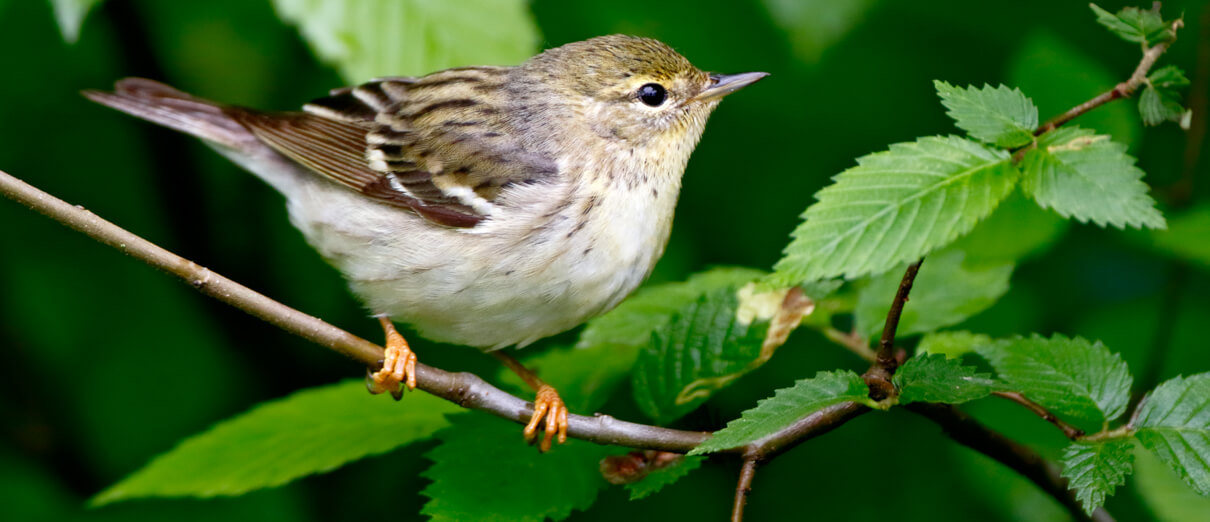
This warbler has a high incidence of double brooding, that is, nesting more than once each spring. By double brooding, the species produces a higher number of offspring than many other species. Some males have more than one mate each nesting season, a breeding system known as polygyny. Females tend to return to nest sites of the previous year, even if a different male holds the territory.
Feeding on Different Levels in Different Seasons
The Blackpoll Warbler has a rather slow and deliberate feeding style, gleaning insects and spiders from branches. On both breeding and wintering grounds, this bird keeps to treetops or mid-canopy. But during migration, Blackpoll Warblers often feed low, often in young trees and shrubs; they will even come to the ground to find food or water.
Region and Range
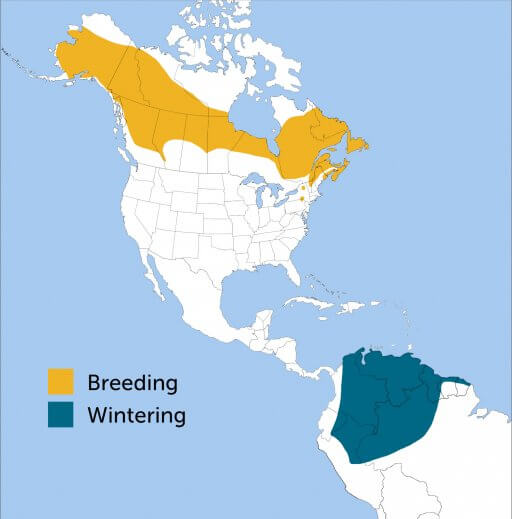
The Blackpoll Warbler nests as far north as warblers go, and winters farther to the south than any other warbler that nests in North America. Like the Yellow, Orange-crowned, Yellow-rumped, and Wilson's Warblers, and the Northern Waterthrush, this species nests to the treeline, where boreal forest peters out in far northern Canada and Alaska. The farthest south this species breeds is in the northern Appalachians along the New York/Pennsylvania border. This species also nests in some areas of New York's Adirondacks. Canada's Maritime Provinces constitute the eastern limit of the Blackpoll Warbler's breeding range.
The Blackpoll Warbler has the longest period of migration of any warbler: Many leave nesting grounds by August but linger on the mainland before their overseas flights. Blackpolls are often seen in the first half of October in the U.S., after many other Neotropical migrants have left.
This species winters in northern South America east of the Andes, from foothills to lowlands. Some wander far south of their expected winter range. In fact, there are reports from Argentina and Chile, the farthest south any North America-nesting warbler has been seen.
Conservation
Common, Yet Declining
Although still common, North American Breeding Bird Survey data indicates that Blackpoll Warbler populations are declining in the southern part of their range. In 2016, the conservation consortium Partners in Flight listed the species as a common bird in steep decline.
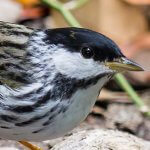
Help support ABC's conservation mission!
In 2023, the combination of warming temperatures and drought fueled one of the worst fire seasons ever in Canada's boreal forest belt, no doubt contributing at least short-term to the species' challenges. Meanwhile, boreal breeding grounds are also at risk from habitat loss caused by industrial development, which destroys nesting habitat.
Like all warblers, Blackpolls migrate principally at night, when they risk collision with brightly lit communications towers and buildings.
Canada has taken steps to protect large areas of its boreal forest, preserving millions of acres of habitat for the Blackpoll Warbler and other species dependent on these lands, including the Canada Warbler, Swainson's Thrush, and Rusty Blackbird. In addition, forest management practices that also benefit boreal forest nesting songbirds will be needed to ensure a turnaround for this familiar and still-common species.
Get Involved
Policies enacted by the U.S. Congress and federal agencies, such as the U.S. Fish and Wildlife Service, have a huge impact on migratory birds. You can help shape these rules for the better by telling lawmakers to prioritize birds, bird habitat, and bird-friendly measures. To get started, visit ABC's Action Center.
Living a bird-friendly life can have an immediate impact on migratory birds in the United States. Doing so can be as easy as adding native plants to your garden, avoiding pesticides, and keeping cats indoors. To learn more, visit our Bird-Friendly Life page.
American Bird Conservancy and our Migratory Bird Joint Venture partners have improved conservation management on more than 8.5 million acres of U.S. bird habitat — an area larger than the state of Maryland — over the last ten years. That's not all: With the help of international partners, we've established a network of more than 100 areas of priority bird habitat across the Americas, helping to ensure that birds' needs are met during all stages of their lifecycles. These are monumental undertakings, requiring the support of many, and you can help by making a gift today.

